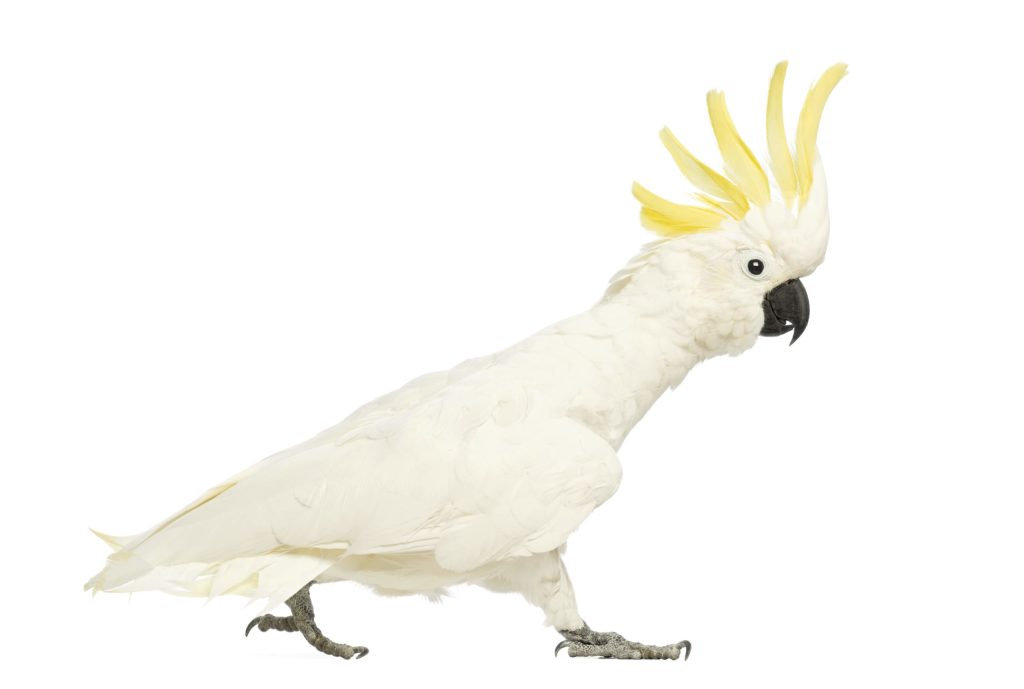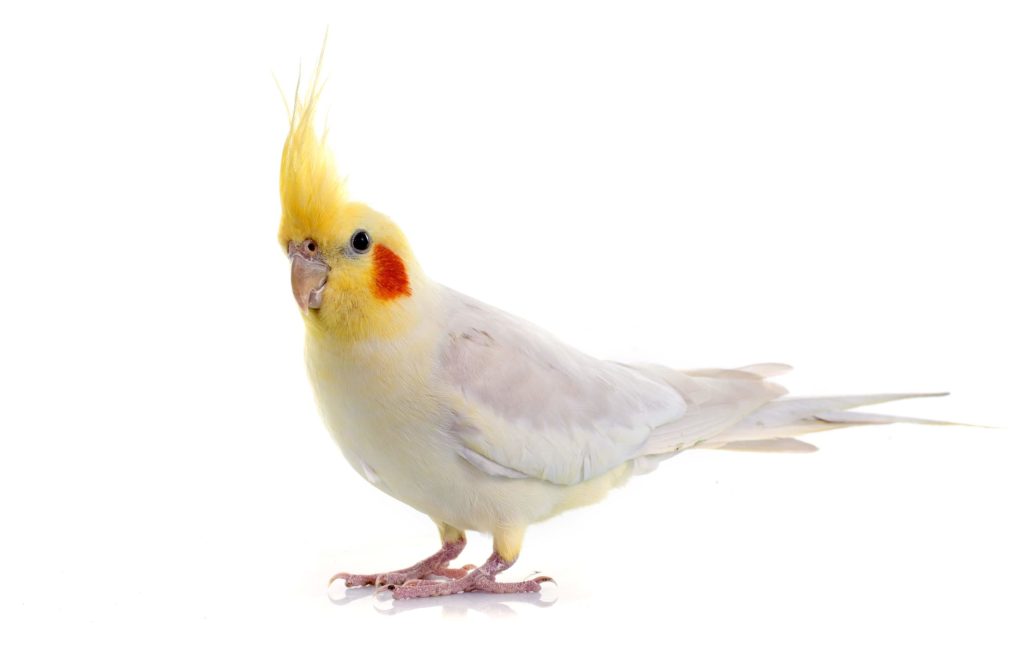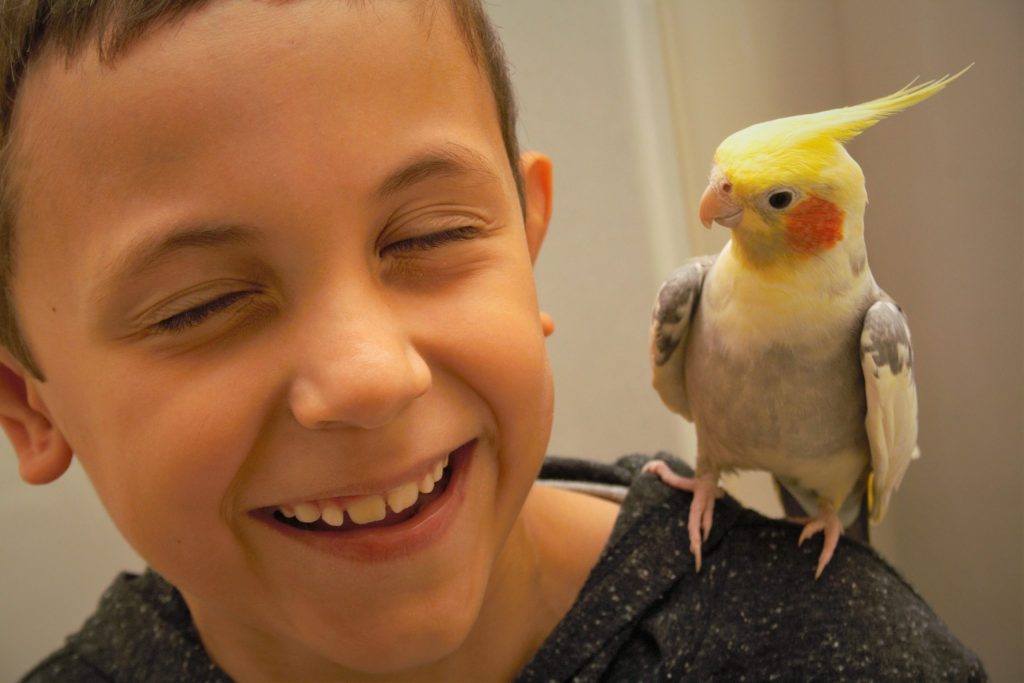The Cockatoo vs Cockatiel is a comparison between two birds that belong to the same family; parrots. But there is a misconception that parrot is one single bird that imitates human voices and is brightly colored. Let’s get a brief detail about parrots.
What are Parrots?
When I was a kid, my neighbor had an Indian Parakeet who made weird noises every time I approached his cage. I used to wonder whether the Indian Parakeet is the only parrot that can be domesticated or are there any other species out there. That’s when my school teacher said many bird species are popular and can be domesticated other than parakeets.
Then my curiosity grew much more to find out which other species are popular pets. Though there were some data variations throughout the years, the most popular bird pet is the parrot.
The question; which parrot is most popular? Wait, ‘you just said parrot is the most famous bird pet, and now there are more parrots?’ The parrot or Parakeet is not one bird species. The parrots include 393 species of birds with 92 genera. In these species, the budgerigar or budgie is the most popular bird pet. It is the third most famous pet after dogs and cats.
The second most popular bird pet is the Cockatiel. Well, a little light has to be shed before we know more about the Cockatoo vs Cockatiel. In summary, several parrot species are widely used as pets. Both Cockatoo and Cockatiel are parrots. Let’s get into details about the Cockatiel vs Cockatoo battle.
NOTE
Cockatoos include 21 different species native to Australia, Philippines, and Indonesia. They are also seen in some pacific islands. On the contrary, there’s only one species of Cockatiel (Nymphicus hollandicus) and is native to Australia.
Physical Appearance


We are talking about parrots of the same family. You know very well most of the birds belonging to the same family have more or less the same physical characteristics. The Cockatoo vs Cockatiel are no different concerning this feature.
The primary difference is their plumage, size, and lifespan. Cockatiels are smaller in size than the Cockatoos. They measure around 12 – 14 inches (30 – 33 cm), smaller than the Cockatoos that are almost double their size (24 inches or 60 cm). The beak of Cockatoo is much larger than Cockatiel, but both are curved, a characteristic feature seen in all parrots. Compared to body size, the cockatiels have a longer tail than a Cockatoo. It will be as long as the length of their body.
The beak of Cockatoo is stronger than Cockatiel and is used to climb obstacles such as tree branches. Their beak is often referred to as the ‘third leg.’ Do not test their biting power on your bare skin or fingers. They have powerful jaws that can exert up to 350 pounds per inch of force, equal to the bite force of a Husky or a Rottweiler.
Since Cockatoos are larger than cockatiels, they weigh much more. The average weight of Cockatoo is between 300 – 1200 grams (0.6 to 2.6 lb), whereas the adult cockatiel weighs just 90 grams.
Do you know why many people domesticate parrots? The primary reason is because of their brilliant colors, their plumage. Unfortunately, it is not true in the case of Cockatoos. Cockatoos are solid plain color, and the most predominant color is white, followed by black, grey, and very rarely pink.
Domestic cockatiels are brightly colored with multiple shades. The color pattern in captive cockatiels is due to a genetic mutation that alters their plumage. Wild cockatiels are also colored, but most of them are grey with white patches on the body and yellow or green on the tail. In terms of plumage between Cockatiel vs Cockatoo, there’s a clear winner; the Cockatiel.
Sexual dimorphism is not evident in young or juvenile birds. It can be distinguished in adults through their plumage. The female Cockatoos have a duller color than males. The most remarkable sexual dimorphism is seen in gang-gang Cockatoos in which the males have a redhead.
Since there’s only one species of Cockatiel and are brightly colored, careful observation is required to distinguish between males from females. The adult cockatiel will develop bright yellow bands under the belly and on the side of the body. It is a characteristic feature to attract the female.
Lifespan
The Cockatoos have a longer life span than cockatiels either in captivity or in the wild. They can outlive you if proper care is given. Some species, such as the sulfur crested Cockatoo, will live up to 100 years or more.
Cockatiels have a lesser life span ranging between 14 years in captivity and 25 years in the wild. If you give all the care and love, captive cockatiels will live more than 20 plus years.
Vocalization
You might get very annoyed by the vocal ability of the Cockatoo. Their voicing ability is often described as ‘harsh and loud.’ They try to mimic their owners and even other pets in your house. You might have seen plenty of videos where Cockatoos imitate dogs and cats. They also make a hissing sound like cats when threatened.
You can train them to mimic many words, but you need to train yourself to get ready for an argument. Yes, they are very stubborn and like to talk back with whatever words they’ve learned.
Cockatiels are docile compared to ‘toos. They make more bird-like sounds (chirps) and are not too vocal. But they are very popular in mimicking the household sounds. Cockatiels are a bit less stressful than Cockatoos.
Socialization

Cockatoo makes an excellent companion for all committed pet owners. They are very affectionate to their owners and will form a great bond. They can be stressed if left alone for longer durations. They are funny, mischievous, and are always a pleasure to have them around.
Cockatoos require good socialization in their early days; if not, they can scream and shout out of stress. Another reason for this phobic behavior is due to early weaning. But if proper care is given, they are one of the best cuddly pets. You must engage in frequent socialization patterns such as introducing him/her to many human companions, and sometimes leaving it alone and not for longer durations. If you mix both techniques, it will help in preventing boredom and learn to entertain themselves alone. It is also good at preventing destructive behavior.
Cockatiels are very independent, and you will not find it much difficult to raise one. They are often calm and can be independent without any symptoms of stress or destructive behavior. But it doesn’t mean that you can lock them up in a cage most of the time.
They are also very good with people, and a well trained ‘tiel will make a great pet similar to a Cockatoo. The only difference is that they are not as silly as Cockatoos.
NOTE: If you are buying an adult cockatiel born and grown in captivity, ask the breeder if the bird has made a bond with its opposite sex. If yes, NEVER separate them. Get both of them together or get one that hasn’t formed a bond. Cockatiels will form pair bonds and will develop severe stress if separated from their mate.
Cage and Home Requirements
The golden rule of cage requirement for any pet bird is to provide enough room to flap their wings. But you can provide a cage as large as you can. Since Cockatoos bond well with humans than cockatiels, you must place the cage where the bird can see people.
An ideal cage for a Cockatoo must be 36 inches wide, 24 inches deep, and 40 inches high. Provide toys, water pots, and feeding bowls inside the cage. Change the toys often; it will keep the bird indulged most of the time. Remember that Cockatoos are very intelligent; they might learn the skill to open the cage door. It can be fun to see the escape artist, but sometimes you might need to keep them locked. So, you might need to make sure the cage door cannot be opened.
A cage with horizontal bars will be a passive toy for the Cockatoo. They will climb and often indulge in playful activities. If space is not a concern, you can opt for an aviary that can house multiple birds and add-ons such as parrot stands and java trees.
Cockatiels are active flyers. They will fly whenever given a chance. Some people argue that you must provide a much larger cage than the common conception, where it is suggested that the cage must have enough room to flap the wings. I agree with these ‘groups’ of people. Unlike Cockatoos, cockatiels are a bit independent and can be happy if left alone in cages. If the cage is large enough for the bird to fly from one corner to the other, he/she will be happier, and you can add another bird.
It may not be possible for everyone, especially if you have space restrictions. Cockatiels are ground foragers. You must provide ground space filled with natural elements (grass, mud, etc.) to stimulate their instincts.
Like the cages of Cockatoos, you must include all the essentials; toys and feeding bowls.
Both the birds get will with humans. Never lock them inside their cages for long periods. Allow them to roam or fly inside the house. You can add indoor trees that can bear the weight of these birds without breaking.
If there are other pets such as cats or dogs, don’t clip the wings. It will help the bird to escape from them whenever needed. Do not leave the birds unattended with children.
Diet
A balanced diet is mandatory for both birds. Depending on the Cockatoo species, their diet will consist of seeds, nuts, berries, leafy vegetables, roots, and nuts.
Peanuts and sunflower seeds are a popular choice of nuts for both the birds. But do not feed only these two seeds and also do not feed commercial seed mix. There is a high probability of malnutrition in both cases because they are high in fat content and low in essential minerals. Seeds can be their favorite but do not limit them to it. They must be least in the quantity of their entire diet.
If your bird is addicted to seeds (seed-aholic), you must work more in weaning off from seeds. Feed them with fruits, veggies, and roots.
WARNING: Avocados can be potentially toxic to both of the birds.
A commercial pellet diet can be given as it contains all the essential nutrients. It is considered a balanced diet and can help you in weaning off from the seed diet.
Human food that not too spicy and is whole and balanced can be fed. All you must do is provide a well-balanced diet with plenty of water.
There are no exceptions in terms of diet care between the Cockatiel vs Cockatoo. Clean the dishes every day because they can be contaminated with their droppings. Young birds or those still coping with their new home will require greater attention towards their diet. If you are still unsure, contact your vet. They might help you formulate the right diet for your bird.
Can They Be Kept Together?
Yes, and No! Cockatoo is larger than Cockatiel and can become aggressive towards smaller family members. But it isn’t true always because no two birds are the same.
Since the cage requirements are different for both birds, it is suggestible not to house them together. You can keep both in different cages and let them outplay together. It would be best if you did this when both of them are properly introduced to each other, and the Cockatoo does not develop a tendency to rush and attack Cockatiel after they are left out of their cages.
If properly trained, there can be a friendly or playful chase, but it should not persist forever.
Another important thing is, in natural habitat, the Cockatoo is a territorial bird, and Cockatiel is social. You can see more than 100s of cockatiels flocking together. This territorial behavior of Cockatoo may result in harming the smaller bird no matter how well they are trained. My take on this is not to raise these two birds together.
Which Is the Best Parrot?
Having a Cockatoo is like living with a 3-year-old toddler for 100 years. They are very naughty, argumentive, and stubborn at times. But if you train them properly, they can be excellent pets.
You have to socialize them properly and make sure that their aggressive or territorial nature is kept in check.
As mentioned earlier, cockatiels are 3rd most popular pets after dogs and cats. Raising a cockatiel is relatively easy than a Cockatoo because of their docile nature. They are also very colorful, and if you are a person concerned about looks in a bird, Cockatiel is for you.
If there are many people in your family, like living together, Cockatoo can be loads of fun. It can be beneficial for the bird and the family. If you stay at work for longer periods, Cockatiel is suggested. But remember that no two birds are the same. Even though cockatiels can do good if left alone, they can become stressed and develop destructive behavior.
Selecting the ideal bird between Cockatoo vs Cockatiel can be very tricky. Understand the bird’s need and your commitment. The Cockatoos have a very high life span and can outlive you. Because of the demand for their care and constant attention throughout your entire life, most of them end up in shelters. It is because the owners did not think of this in their initial days.
You must understand the commitment required is much larger for Cockatoo than Cockatiel.
So, have you decided which parrot are you getting out of these two magnificent birds? Were you able to decide between the Cockatiel vs Cockatoo? Let us know your story; we would love to hear it.

Lydia King is a huge animal lover and has always been fascinated with learning about the animal kingdom. She enjoys writing about anything animal related from scientific information about rare species to animal references in pop culture.












